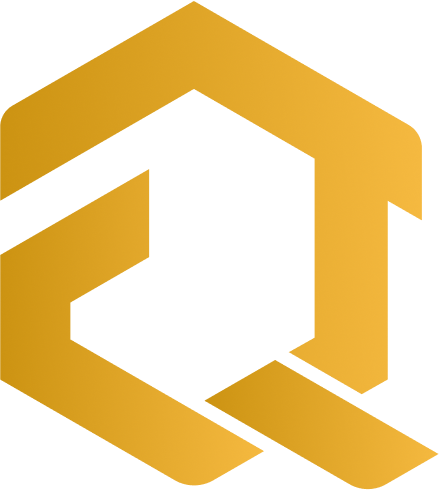The future of application delivery begins with modernization

IDC estimates that there will be 750 million cloud native deployments by 2025. Where and how these applications are deployed impacts time to market and value realization. The reality is that application environments are complex and companies must maintain and modernize existing infrastructure while delivering new cloud-native capabilities. Three out of four executives report that they have disparate systems within their organization and that business goals are hampered by a lack of technology, resources and common operating practices.
Management knows it needs to modernize. In fact, 83% of IT executives believe modernization is core to their organization’s strategy, yet only 27% say their organization has modernized essential workflows (including applications, data, and underlying systems). But it’s clear that CIOs who prioritize modernization stand to gain more from business transformation.
CIOs can enable application modernization through several factors.
1. Approach to new software innovations:
Software has become the lifeblood of every domain. With the advent of AI, ML, hybrid cloud, and DevSecOps, the effectiveness has increased exponentially, and there are more advancements to come. Organizations must keep up with today’s technologies to innovate and meet the ever-changing needs of their customers.
Each organization strives to excel by adopting modern and innovative software approaches. growbut survive. Many organizations have fallen off the technology map due to their inability to quickly adapt and adopt innovations.
2. Increase speed and agility:
The world is changing rapidly, and the biggest driving force enabling this change is technology. Organizations need complete flexibility to address critical questions, including:
- How quickly can you test your hypotheses (e.g. number of regions or number of user personas)?
- How quickly can you get your features to market (from concept to production) and beat your competitors?
- How can you respond effectively to changing market conditions?
- How can you realize the value of your innovation faster?
- How do we continue to innovate while delivering value?
- How efficient is your release process?
If your answers to the above questions are negative, you are losing ground compared to your competitors. Adopt developer tools and agile processes to help you accelerate and solve these challenges.
3. Deliver value and reduce business costs
Reducing production costs helps increase agility by adapting faster to new business goals. It’s important to save money on all fronts. Automation helps speed up feature execution, fast feedback loops, reduce waiting and coordination times, and promote high-quality testing frameworks, resilient platforms, easy and fast upgrades, and zero downtime.
Beyond traditional cost-cutting methods, addressing sustainability has emerged as an essential part of modern cost-cutting approaches. By 2027, 25% of CIOs will have compensation tied to sustainable technology impact..
Modernization can substantially address sustainability goals. Reducing reliance on hardware, increasing use of auto-provisioned infrastructure, and leveraging reusable components and modules are concrete ways to improve environmental impact.
4. Reduce risk and technical debt:
All legacy releases are inherently risky due to their long release cycles. The risks of not modernizing your applications include increased downtime and limited and slow response times to rapidly changing customer requirements. Downtime and slow releases can have a significant impact on an organization’s economics and damage customer relationships. Legacy applications also account for a large portion of an organization’s technical debt, with monolithic architectures and development processes. And in many cases, there is a lack of knowledgeable developers who know how to update and build on them.
In the survey 41% of respondents selected ‘reducing technical debt/upgrading legacy systems’ as their top priority. Technical debt is also costly and accrues over time. For example, the cost of technical debt in the United States is: $1.52 trillion In 2022.
Flashy features get the spotlight, while technical debt gets pushed to the bottom of the backlog. Increasingly, technical debt hinders the development of new features, which increases the risk and cost of fixing them.
Runtime modernization is a big step towards curbing these problems. Minimal setup is required. Future-proof your organization by making it easy to evolve with containers and microservices.
5. Developer experience:
In the software industry, it’s becoming increasingly clear that a good developer experience leads to a great customer experience.
Approximately until 2026 80% of software engineering group We will build a platform team as an internal provider of reusable services, components, and tools for application delivery. Many organizations are focused on improving the developer experience to become more agile and responsive.
This also reduces cognitive load and links developer morale to business value. Some areas where great results can be achieved are breaking down complex architectures, increasing the use of modern development tools and processes, and creating internal platforms with reusable and composable components.
Adopt the right skills and tools for success
IBM Cloud Pak for Applications (CP4Apps) provides an end-to-end set of hybrid cloud application services that provide ultimate flexibility for deploying, building new cloud-native applications, refactoring and re-platforming existing applications. It helps you on your application modernization journey by providing the following benefits:
IBM Cloud Pak® for Applications (CP4Apps) provides a comprehensive set of integrated products and features that help organizations continuously modernize existing applications and transform with new cloud-native microservices.
- Comprehensive runtime supporting VMs and containers for Java applications
- AI-based tools for app refactoring: Transformation Advisor, Mono2Micro, Migration Toolkit
- Kubernetes-based platform (OpenShift) supporting on-premises and cloud
Let’s take a look next. small print:
- The application runtime of your choice, including IBM WebSphere® Application Server (WAS), IBM WAS ND, IBM WebSphere Liberty, Open Liberty®, Red Hat JBoss® EAP, Quarkus, and Tomcat.
- Frameworks and technologies such as Red Hat Data Grid, Node.js, OpenJDK, Spring Boot, etc.
- Application modernization tools, including IBM Transformation Advisor, IBM Mono2Micro, IBM WebSphere Migration Tool Kit, and Red Hat Migration Tool Kit for Applications.
- Open source Kubernetes container platform Red Hat OpenShift
Now let’s look at one of the runtimes available in CP4Apps: IBM WebSphere Liberty. A lightweight and fast Java runtime. Liberty’s key benefits include:
- Get faster startup times with on-demand scaling: Provides ‘InstantOn’ feature that delivers application launch times 10x faster than standard Java. Liberty InstantOn is also ideal for serverless, event-driven application architectures, allowing you to quickly scale up and down based on demand.
- Eliminate technical debt and reduce ‘mean time to recovery’. zero migration: Liberty is the only Java runtime that allows you to stay current with no new code or configuration, no migration costs, or unplanned downtime. It also helps minimize technical debt.
- Connect anywhere: Liberty is compatible with a variety of applications/architectures, including monoliths, macroservices, or microservices.
- Increased productivity and reduced costs
Average annual profit per organization:
| category | By organization |
| Developer Benefits | $11,795,139 |
| employee benefits | $2,435,714 |
| Business Productivity Benefits | $630,070 |
| Reduce IT costs | $630,070 |
| total cost savings | $15,573,597 |
Scroll to see the full table.
Cloud Pak for Application customers are excited about the benefits Liberty brings to their modernization efforts.
Partner with us to deliver an application experience that adapts to your business.
Start your ongoing modernization efforts today with Cloud Pak for Applications
Was this article helpful?
yesno



